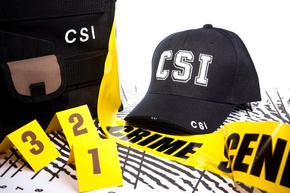
Sooner or later, almost all of us have yelled on the fictitious detectives contained in our TV screens, stating the apparent suspect who received’t be caught till the top of the 40-minute procedural. As we play armchair detective, we’re positive that we’d be tremendous sleuths if we had been in the identical place.
Our youngsters have most likely skilled the identical emotions, with the avalanche of crime scene reveals on tv. Whereas actual crime scene investigations are hardly the identical as they’re on TV, that curiosity is a good way to introduce younger learners to an amalgam of science, math, logic, mapping, documenting, and reasoning abilities.
Utilizing a mock crime scene is a straightforward and thrilling strategy to apply abilities from the classroom into an interdisciplinary undertaking that’s student-driven, team-oriented, and an train in higher-level reasoning. Listed below are a couple of tricks to make your mock crime scene successful.
Hype is Half the Battle
Make your class really feel like they’re really detectives by including official touches. A fast journey to the shop can provide you with warning tape and official badges. Have one scholar accountable for checking folks out and in of the crime scene, emphasizing the significance of holding the crime scene uncontaminated. Have somebody who’s professionally dressed debrief your college students with the encircling particulars of the case earlier than they enter the scene.
Listed below are some provides that may assist make your crime scene appear extra official:
- Warning tape
- Proof luggage (even simply ziplocs)
- Cotton swabs (for blood or liquids)
- Cameras
- Proof logs/graph paper to map the objects within the room
- Plastic gloves
- Tyvac fits (laborious to seek out—however they give the impression of being very official)
- FBI/Safety shirts or jackets
Preserve it Easy
Once you create your crime scene, you don’t even have to have a whole story in place. That is modeled on actuality, not an elaborate “whodunit.” Scatter random objects in a room, even issues like hair or a spilled drink. For youthful ages, you possibly can have the scene of a theft; for older, you possibly can have a murder. Halloween or costume provide shops have faux blood that’s simple to take away. Impress in your investigators that every little thing is proof. Push them to hunt intently to think about each element; each hair, each footprint, each merchandise might have a clue.
Step Apart
When you temporary your class on what to search for, {photograph}, and gather, flip them unfastened. This permits them to make their very own conclusions, create their very own processes, and work as a gaggle. Have your class divided into teams, so that every scholar has a particular function. Listed below are some strategies:
- Group chief (accountable for safety and assists different members)
- Photographer (paperwork scene first)
- Mapper (attracts out the room with precise measurements of things)
- Proof collector (luggage and tags gadgets)
As soon as every crew has their roles, allow them to determine how one can strategy the crime scene, and what conclusions they make. Collaborative abilities are simply as important to youngsters as tutorial data. By giving them this freedom, you might be giving them an opportunity to follow.
Deliberate Synthesis
The crime scene is your launch occasion. The true interdisciplinary work occurs after the proof assortment, once you take that information and use it within the classroom. Listed below are a couple of strategies:
- English: Have the category write up official studies on the gadgets within the crime scene, emphasizing precision and thoroughness. Then, have them make inferences about what the gadgets might imply, in addition to subsequent steps for the investigation.
- Math: Use the measurements from the crime scene to show fundamental algebra and geometry. You possibly can take two measurements and discover the gap of the third line of a triangle, or use the gap between footprints to estimate the peak of a suspect.
- Science: Train concerning the composition of blood, or the consequences of climate or erosion on proof. Examine fingerprints and the totally different patterns by utilizing ink and placing fingerprints on balloons—when the balloon is blown up, the fingerprint is seen.
The instructions you possibly can take this material are innumerable. Nevertheless, it’s most helpful to have a strategy to synthesize the connections between topics. Have a mini-science truthful with board shows, or portfolios of the group work. When lessons see the interconnectivity of topics, they’re extra prepared to work in all content material areas.

